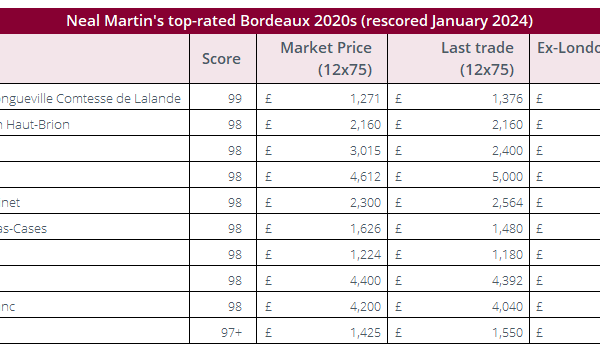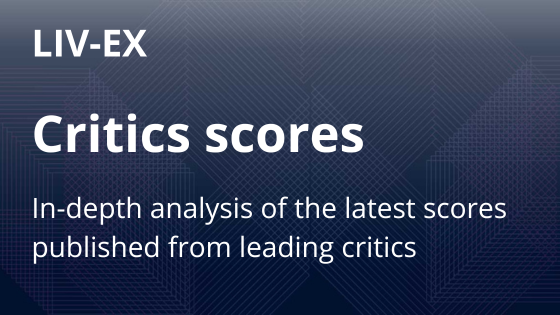Back in September 2011 we ran a post on the Liv-ex blog about SWAG (Silver, Wine, Art and Gold), a new grouping of physical assets. The economist, analyst and writer behind this acronynm, Joe Roseman, has recently had a book on the subject published. We caught up with him to discuss the ideas behind SWAG: Alternative Investments for the Coming Decade (Grosvenor House Publishing Limited, May 2012) and the role that wine plays in a financial portfolio. You can learn more about SWAG and its author – and also purchase the book – at www.swaginvestor.com.
Q: What is the basic argument behind the book?
A: The principles behind the book are quite simple. Certain assets have a very similar DNA. They are physical in nature. The supply of the asset is relatively fixed and scarce. SWAG assets also tend to have the ability to last: Lafite and other First Growths will often last 50-100 years. These types of assets tend to perform very well in a financial era where money printing is rife: they provide portfolio protection in a way that traditional financial assets do not. Equities can go bust and bonds can default, but a bottle of Lafite will always be a bottle of Lafite. An ounce of gold will always be an ounce of gold.
Q: Your book talks a lot about financial repression. Can you explain this?
A: Financial repression is a description of a period where governments try to keep interest rates below inflation. It is a way of transferring wealth from savers to borrowers. In this type of world, the saver gets punished by holding cash. The biggest borrower, of course, is the government and they need to find ways of becoming more solvent. Punishing the saver is what financial repression does. My book discusses this process and how savers can act to avoid it.
Q: So, SWAG assets act as a store of value?
Yes. Think of it like this: a hundred years ago, an ounce of gold bought about 15 barrels of oil. Today, it buys around the same. Gold has held its value as a means of purchasing power. A hundred years ago, one dollar bought about two barrels of oil, but today it buys a few mugs of oil. As a paper currency, the dollar has lost around 99% of its purchasing power. Why has that happened? The answer is simple. A hundred years ago the money supply was about $10 billion, whereas today it is about $10 trillion. Each dollar buys substantially less. What does this mean for wine prices? Well, as more and more money gets printed, the price of wine will just keep being driven higher as the money liquidity ends up in the best-looking assets.
Q: Why do you think wine has not gained wider acceptance as an asset class?
A: Wine suffers as an asset class because it is not as readily quantifiable as many typical financial assets. An equity or a bond has an income stream and today’s financial analysts have been educated in such a way that this is seen as a crucial component to valuation. So many financial analysts struggle to value assets like SWAG because it does not have an income stream. The financial pages are littered with examples of equities with income streams that analysts have badly misjudged: Enron, WorldCom, Lehman Brothers, Washington Mutual. Income streams don’t really help analysts see those bombshells coming yet they feel more comfortable trying to predict such assets. That seems crazy to me.
Q: Why do you think wine has a role to play in a financial portfolio?
A: Any portfolio requires a balance of assets. In an ideal world, you want some assets to do well when other assets are suffering so that the portfolio, overall, has less volatility. If a portfolio contained just US and UK equities, then one could expect them to be highly correlated. However, if one also included US bonds in that portfolio, then the volatility would likely fall. The ideal world is one where the addition of a new asset causes the overall return of the portfolio to rise (or stay the same) but at the same time reduces the volatility. Historically, fine wine has managed to do that. Academic research shows that fine wine has a low correlation with traditional financial assets and it is on this angle that it merits attention as part of a portfolio.
Q: The last year has not seen wine act as a good hedge against falling equity markets. Is it possible that the historical relationship has broken down?
A: No asset goes up in a straight line. It is also true that the relationship between assets is rarely linear. However, the academic research was based on almost 15 years of data and that gives some confidence that over time the diversification benefits of wine will work through. Having seen stunning returns on wine amidst the 2009 and 2010 vintages, it is entirely plausible that the correction that has been seen in fine wine over the last year has more to do with a wine market correction than anything to do with equities. Maybe it is just the case that after two or so years of sharp price rises, wine needed to pause – as any asset in a bull trend does.
Q: What factors going forward do you see as key drivers for wine prices?
A: This is a crucial question. Money supply printing and quantitative easing are now very evident components of economic policy. As the need for more and more money printing develops, this will propel SWAG-style assets higher in price, just as it has done for the last decade or more. Yet with wine there are also other factors at play. Firstly, the very best wines are highly restricted on supply. Indeed, as the focus on quality becomes more and more intense, one could argue that the supply curve for the very best wines is almost perfectly inelastic. Secondly, demand is rising constantly. My book goes into great detail on the growth of new demand from the emerging bloc, and this will be a key factor going forward.
Q: What other developments do you think will evolve?
A: I think wine critics have a role to play in the field of wine. Of course they do. But that role is as wine critics and not as wine investment advisers. Rather than look at wine critics for their views on investment, the future will likely see more quantitative assessment of wine as an asset class. I highlight some academic research in my book. There is very recent academic research from the University of East Anglia that examines diversification across different types of wine. This type of research can only be helpful when it comes to developing wine as an asset class. Wine funds are also moving down the same path, attempting to add some quantitative rigour to their wine investment recommendations. I expect to see more and more of this. Indeed, Liv-ex has perhaps been a pioneer in trying to make wine more quantitatively accessible. This is the way forward for wine investment.
Q: Are there any specific wines that you think offer good investment potential at the moment?
A: Again, I think this is an interesting question. Equity analysts will definitely promote specific equities and will aim to trade such opinions. I don’t think wine is that type of asset. I think it is an asset that needs to be held for the medium term and as a part of a well-constructed portfolio. Clearly, every now and then, specific wines get some momentum behind them and can produce very strong short-term returns. That is not what SWAG investing is about. My view is that the very high quality wines will likely prove to have the best risk/reward returns. The University of East Anglia research confirms the idea that different regions and styles will improve the balance of the wine portfolio, and I tend to agree with that. The simple answer is that a medium term focus on quality is the most likely winner.




